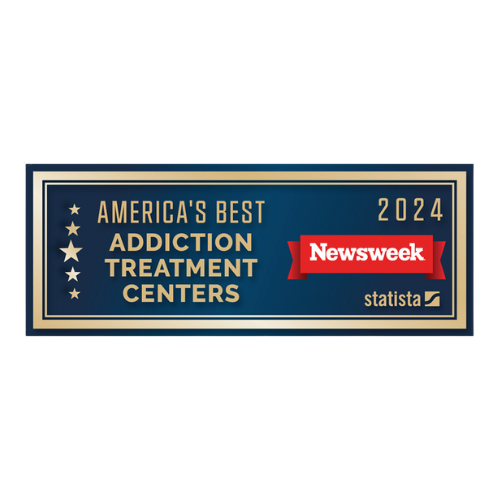Addiction is a comprehensive disease. Whether a person is just beginning their recovery journey or is looking to further their recovery goals as a sober alumnus, there are always new challenges to overcome and new milestones to reach. Finding and updating strategies to address physical and emotional needs in recovery is paramount, with each person having their own best approach for navigating the symptoms of addiction and finding the best, holistic way of coping with the disease and underlying personal needs. Somatic experiencing is one option for personalizing and enhancing each person’s addiction treatment program, providing an effective option for those overcoming the challenges of addiction and its relationship with mental health needs, disorders, trauma, and more.
What Is Somatic Experiencing?
Somatic experiencing is a therapeutic technique that releases pent-up stresses and energies in the body and mind, relieving physical and emotional tension. It is commonly used in addressing addiction alongside underlying mental health disorders and traumatic experiences, empowering those in recovery to tune themselves to physical signs of stress.
This guided approach to healing uses a body-first strategy, utilizing the body and its signs and signals to challenge deeply harbored challenges, stress, and traumatic experiences. By listening to the body, identifying areas of tension, and addressing physical needs, those in recovery can address underlying and suppressed emotional challenges. Somatic experiencing uses the body and bodily sensations to understand the effects of trauma and mental health needs to create a more comprehensive approach to change, supporting cognitive healing with equally impactful physical healing to overcome addiction, trauma, PTSD, and mental health disorders.
What to Expect in Somatic Experiencing Sessions
Each person will have their own best practices in addiction recovery and addressing their unique underlying needs and goals. However, knowing what to expect when exploring somatic experiencing as a healing option can empower each person to approach these strategies with the best intentions and most effective outcomes.
During a session, a person will work closely with a trained professional to discuss the benefits and principles of somatic experiencing and explore how they relate to their recovery goals. Then, mindfulness strategies and a mind-body connection are established, helping each person connect to physical sensations in their body. This is to explore how each person’s body may be harboring trauma, stress, or other challenges in addiction recovery, from noticing tension in certain areas of their body to tightness, heaviness, soreness, and more. Establishing this mind-body connection also creates a feeling of safety, focusing equally on positive sensations, tracking how each of these sensations makes a person feel, and learning to track physical changes in the body.
Next, a person will be guided to move from this place of emotional calm and peace to gently exploring past traumatic experiences. This is handled without suddenly and wholly delving into past traumas, instead focusing on introducing difficult topics and returning to a place of emotional safety, with sessions frequently moving between exploring discomforts and peace and calm in equal measure.
While exploring difficult feelings associated with addiction, trauma, and more, a person is guided to focus on how certain areas of their bodies may feel different than before, noticing subtle changes in tension, warmth, tingling, and more to indicate where these stresses may be affecting the body most. Allowing the body to react in the way that is most instinctual is crucial to expelling these stresses and feelings from the body, and it is not uncommon to experience shaking, crying, yawning, and more during this time as a person focuses on these changes but allows them to happen.
Then, a person is guided back to a place of emotional safety to explore how they feel at this point, resituating physically and emotionally in a comfortable space. Because of this body-first approach to processing stress and emotional tension, those in recovery can benefit from this kind of healing without having to verbalize their thoughts and experiences.
At the end of each session, effective somatic experiencing should leave a person feeling relieved or relaxed, and with an increased mind-body awareness that can continue to benefit those in recovery outside of these sessions. This can help navigate the stresses of addiction recovery or daily life by recognizing signs of distress, anxiety, depression, and more.
The Connection Between Mind and Body
Addiction affects every part of daily life, impacting the mind, body, behaviors, and more. Understanding the connection between the mind and body can be necessary to make the most of each person’s recovery efforts. Somatic experiencing is one option for exploring this connection and engaging in this holistic approach to change. Difficult emotions can lead to self-destructive behaviors, and even inform physical challenges from lethargy to aches, and somatic experiencing uses this interconnected nature to explore new healing opportunities.
Trauma can also closely link the mind and body, with scars, chronic pains, and more all serving not just as painful feelings, but also as reminders of traumatic experiences. While the use of drugs or alcohol can attempt to suppress or disconnect a person from their physical body or well-being, it does not address these challenges. This can also lead to difficulty regulating emotions and make it difficult to recognize signs of physical or internal emotional distress.
The body can harbor many personal signs and symptoms of emotional need, and using a body-first approach like somatic experiencing as a part of a comprehensive healing journey can empower each person to address both their physical and emotional aspects of sobriety in recovery. Somatic experiencing highlights the connection between the mind and body, helping each person to connect physical healing with emotional wellness, and use cognitive healing techniques to further physical healing for a robust and comprehensive approach to change.
Addiction and Trauma
Both addiction and trauma can be intimately related and affect a person’s physical health, mental health, emotional health, and even spiritual well-being. Trauma comes in many forms, from childhood experiences to physical and mental events that leave lasting consequences, impacting a person’s daily life, perspectives, and worldview, even informing changes to daily behaviors and beliefs. For some, these traumatic experiences can be sudden events that have long-lasting consequences, such as witnessing violence, being in a car crash, a devastating medical diagnosis, or other sudden events.
However, other forms of trauma can be the result of sustained challenges and duress, often in cases of sexual or physical abuse, or resulting from prolonged childhood experiences. Both of these forms of trauma can often lead to unhealthy coping strategies, including suppressed negative energies and feelings. The use of drugs or alcohol is a common method of suppressing these challenges and their effects, attempting to push down uncomfortable feelings and memories, or preventing the brain from reliving these traumatic experiences. Trauma can also lead to persistent mental health disorders like anxiety, flashbacks, PTSD, depression, and more, with the use of drugs or alcohol being an attempt to address these daily challenges.
Addressing underlying trauma in tandem with addiction recovery is paramount for effective healing. Hawaii Island Recovery addresses each person’s comprehensive needs, not just by exploring the connection between trauma and addiction and how they may continue to inform each other in daily life, but also by blending emotional and physical healing through effective mind-body connection and healing opportunities like somatic experiencing for a comprehensive approach to sustainable change.
The Benefits and Goals of Somatic Experiencing in Addiction Treatment
Healing and recovery at Hawaii Island Recovery is about much more than treating a collection of symptoms. Rather, effective treatment involves a holistic approach for effective, sustainable change at any point in a person’s recovery journey. Somatic experiencing is a strategy that embodies this holistic approach to overcoming addiction, mental health, and trauma for a transformative recovery journey. It can provide a plethora of new perspectives and techniques for those overcoming complex personal challenges, with a myriad of benefits for a person’s physical health, mental health, and resilience throughout recovery, both in their emotional well-being and the ability to navigate urges and cravings that may otherwise impact a person’s hard-learned sobriety.
Somatic experiencing’s whole-body approach to healing has a few specific goals to help each person enhance their addiction treatment through personalized care and unique advantages. Some of these goals of somatic experiencing include:
- Addresses the root cause of addiction, treating the challenges beneath the disease rather than surface-level symptoms
- Manages energies and calms the nervous system, improving emotional resilience and decision-making skills
- Reduces frequency or intensity of urges or cravings by addressing underlying stresses and personal triggers, either directly related to addiction or triggers of past traumas that may create difficult emotional states
- Improves mind-body connection, exploring the connection between the two, and empowering those in recovery to recognize warning signs in their thoughts, behaviors, or feelings while enacting other coping strategies and effective mindfulness practices
Releasing stored stresses, traumas, and challenges can empower those in recovery to expel these negative energies and tension from their bodies and empower those in recovery to become more in control of their daily lives and recovery journey. Stress, trauma, addiction, and more all profoundly impact daily life, and becoming the agent of one’s healing can be a major step in overcoming the power that these challenges can seem to hold over a person, taking back control not just of daily life, but also a person’s physical and emotional wellbeing.
Somatic experiencing conducted by a professional can also be a great way to explore new challenges or identify areas of stress that may not have been otherwise apparent. By navigating stresses and challenging thoughts, memories, or feelings in a safe environment, each person can explore how these challenges truly impact them and their behaviors. This can be crucial information for developing personalized relapse prevention strategies and treatment plans that address each person’s unique healing journey, needs, and goals for overcoming addiction, trauma, and the challenges of addiction recovery for a truly transformed and effective healing journey.
Barriers to Somatic Experiencing in Addiction Recovery
Somatic experiencing involves slowly and deliberately exploring challenging feelings and their connection to physical sensations to gently guide a person through difficult thoughts and emotions, including the effects of addiction and past traumas. This approach can help improve resilience by gently confronting more and more of these challenges. However, there can still be some barriers to those in addiction recovery that can compromise the strategy. Some challenges to somatic experiencing include:
- Avoidance of distressing emotions makes it difficult to experience these feelings, even in a safe space
- Difficulty maintaining a mind-body connection, especially in those feeling “numb” or “disconnected” from others, or their own being, in daily life
- Ambiguity of a body-based approach to cognitive healing, or discomfort focusing on their own body, either as a result of physical trauma or not feeling secure in their own skin, can add a difficult layer of challenge to committing to somatic experiencing
- A feeling of freedom and letting emotions go can also be interpreted as a lack of control, making relaxing and listening to the body difficult
These challenges are real, and somatic experiences may not be similarly effective for everyone. However, working with a trained professional and combining somatic experience with other proven therapies like cognitive-behavioral therapy, dialectical behavior therapy, and individual and group healing sessions can help to alleviate some of these challenges as a person makes dedicated changes for their healing daily. Even acknowledging which of these barriers are the most difficult to overcome can be important information in prioritizing a person’s healing plan and addressing addiction and its underlying factors.
Part of a Larger Healing Program at Hawaii Island Recovery
Somatic experiencing can be an effective part of a larger, comprehensive healing program, tending to physical and emotional needs while empowering those in recovery to explore the practice in addition to other strategies. Hawaii Island Recovery embraces a variety of effective practices, empowering each person to explore what works best for them and their best combination of strategies for effective, sustainable change.
Combining somatic experiencing with evidence-based treatment modalities, spiritual healing opportunities, nature-based and oceanic healing options, and both individual and group therapy can be a great way of creating a truly comprehensive and personalized treatment program, addressing addiction, trauma, mental health needs, and more for a transformative recovery journey. Hawaii Island Recovery also champions the power of a healing community, connecting each person with peers and culturally competent local communities to further explore new perspectives, ideas, and strategies for each healing journey, all while destigmatizing treatment and creating a safe community to explore personal needs and goals in recovery.
Somatic experiencing can be an effective strategy while addressing addiction, especially for those living with the effects of trauma that may inform their use of drugs or alcohol. However, it is not necessarily effective for everyone. Somatic experiencing is just one option in a comprehensive healing plan, and each person can always explore a variety of options to find what works best for them, as well as discuss their progress in somatic experiencing and pivot to other strategies if necessary to ensure that the person can make the most of their recovery efforts.
Using Somatic Experiencing for Long-Term Resilience
While somatic experiencing sessions can be incredibly helpful for addressing an array of personal challenges throughout addiction recovery, the skills learned can also be crucial for maintaining long-term healing from addiction and trauma. A strong mind-body connection and practiced mindfulness strategies can create the basis of a powerful relapse prevention strategy, incorporating body scans and mindfulness into daily life.
Expressing these stresses and challenges can also empower those in recovery to focus on personal needs more clearly, being able to identify and process difficult urges or cravings effectively. This improved self-awareness can also lead to exploring new elements of a person’s sober identity, not just addressing past use of drugs and alcohol or past experiences, but focusing on the future and the changes that each person wants to make in their life.
Somatic experiencing is an effective practice that blends physical sensations and a body-first approach to healing with emotional needs and change, creating a unique approach to sustainable change. At Hawaii Island Recovery, we believe in the healing power of a truly comprehensive, personalized approach to treatment, empowering you to make the most of your recovery efforts and time in any of our treatment programs. We combine proven, evidence-based therapies with unique holistic healing options, from somatic experiences to nature-based experiential therapies, oceanic healing opportunities, and more for a uniquely Hawaiian approach to change. For more information on our unique approach to physical, emotional, and spiritual healing in Hawaii, call to speak to a caring staff member at (866) 390-5070.
 Hawaii Island Recovery
Hawaii Island Recovery 






